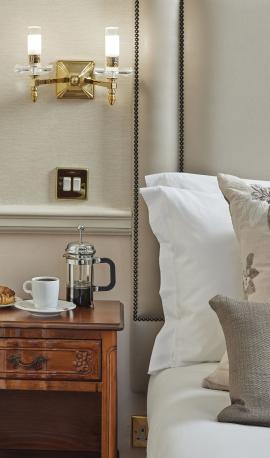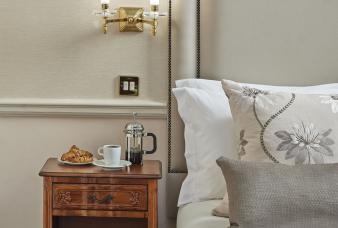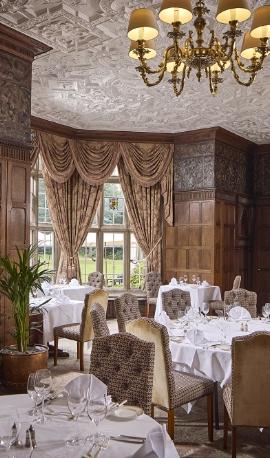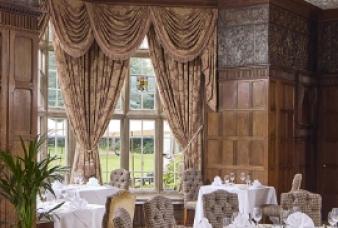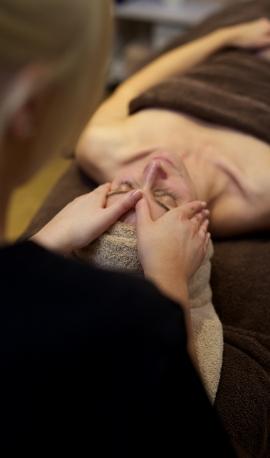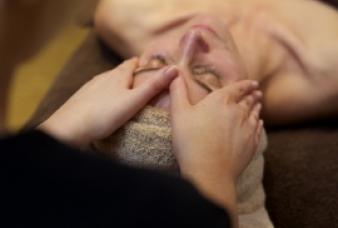On the Estate Map of 1774 it will be seen that the Tylney family owned ‘a vast acreage’ extending into several neighbouring parishes and as far as Rye farm beyond Odiham. Frederick, the last male Tylney, died in 1725 and the property passed to his niece who was married to Richard Child Viscount Castlemaine, who later became the Earl of Tylney.
By marriage to Catherine Tylney-Long in 1812, the estate passed into the grasp of William Wellesley Pole, later William Pole Tylney-Long-Wellesley 5th Earl of Mornington, who was responsible for the demolition of the original Tylney Hall, either for the price of house's materials, or in order to sell the standing timber on the estate. One explanation is, by the terms of the Trust, timber could not be felled within sight of the House, or while the House was standing, therefore he demolished it.
In 1898 Lionel Phillips, later to become a Baronet, purchased the Hall and Estate for £77,000.
Sir Lionel Phillips’ Tylney Hall is the House which still stands today. Nikolaus Pevsner described the house as being conservative for its date with the gardens and asymmetrical tower being the only piece whose details look truly 1900. The Smoking Room ceiling was copied from a 16th Century model but the crowning glory was the Great Hall partially panelled in Italian Walnut with a fine stone fireplace and an Italian ceiling brought in sections from the Grimani Palace in Venice. Sir Lionel spent equally freely on improvements to the grounds of his new mansion.
During the First World War the Hall served as a Hospital and the Park was used as an ASC base for mules. Before the end of the war the Hall was brought by Major Hennessy, later Lord Windlesham, and in 1919 both the hall and much of the original estate was acquired by Major Cayzer, later created Lord Rotherwick. The last private owner of the Hall, he had a distinguished war record as a cavalryman and was a successful businessman from his shipping company, the Clan Line Steamers Ltd. During the Second World War, Lord Rotherwick’s interests came together when Tylney Hall became the Headquarters for his famous shipping line.
The property is undoubtedly of considerable architectural and historical interest and as such is Listed Grade II. The gardens and various features are acknowledged in the Hampshire County Council’s Countryside Heritage Report on Historic Parks and Gardens as being of significant historic interest.
In 1948 the Hall became a school until 1984 when it was closed. It re-opened on October 1st, 1985 as an hotel and Restaurant after extensive refurbishment.
The Grounds
Past
Through its history, Tylney Hall has served a number of purposes including a school from 1948 to 1984. This period caused the once immaculate gardens to suffer greatly as The formal gardens were concreted over and turned into tennis courts, while other areas were left to overgrow and deteriorate.
Present
Since 1985 a painstaking restoration programme has been in place to reinstate the gardens to their former glory. Current achievements include bringing the Water Gardens back to their former glory, restoring the lake bridge, planting the Kitchen Garden with top fruit and creating an herb garden, the produce of which is now being used in the Kitchen.
Future
Projects include restoring the circular rose garden, azalea garden and Gertrude Jekyll’s original herbaceous borders. The rose garden restoration is a project we are going to focus on in the future. The overgrown yew hedge, which encircles it, has been cut to a manageable size. We have cleared and grass seeded the area and it will be replanted with a collection of old roses to the original design.
Our Lounges and Drawing Rooms
Our drawing rooms retain all the elegance and style of the days when Tylney Hall played host to the rich and influential. The Italian Lounge is a splendidly restored period room dominated by marble fireplaces and ornate period furnishings. However, its crowning glory is the spectacular ceiling which was imported piece by piece from the Grimani Palace in Venice. Stepping through into the Grey Lounge is like leaving the world of the Italian aristocracy behind and emerging into Hapsburg Europe. Its light and airy atmosphere, together with the beautiful views it affords over the gardens and grounds, make it a restful retreat throughout the day and a popular spot for enjoying afternoon tea. The old library is another treasure trove which has been lovingly restored to create a quiet and relaxing location for the bar, where pre and after dinner drinks can be enjoyed amidst the hubbub of quiet conversation, which on winter nights may have to compete with the crackle of logs burning in the marble fireplace.

